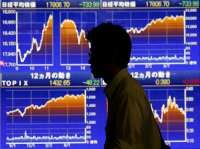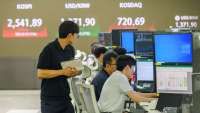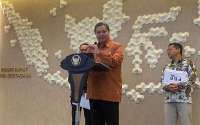COVID-19 - BEIJING. Some people in China's key cities of Beijing, Shanghai and Wuhan braved the cold and a spike in COVID-19 infections to return to regular activity on Monday, confident of a boost to the economy as more recover from infections.
Among those who gathered to sled or ice skate on a frozen lake in the capital's Shichahai Lake Park were some upbeat about the opening-up, after China dropped stringent "zero-COVID" measures on Dec. 7 to adopt a strategy of living with the virus.
However, a wave of infections has since erupted nationwide, after borders had been kept all but shut for three years amid a strict regime of lockdowns and relentless testing.
"The epidemic ... has given us no opportunity to come and play," said Yang, one of those in the park, who gave only one name.
"After the end of this lockdown we don’t have to scan the health code any more nor do we have to check the travel code. So we are free now."
Zhong, a 22-year-old college student, who was also at the lake, said he did not leave home for two or three weeks after he had been infected.
"Now I can go out and it’s good timing for the New Year's Day holiday. I want to go around in Beijing, have a look and feel the festive mood."
Read Also: Yoon Says South Korea, U.S. Discussing Exercises Using Nuclear Assets
Traffic is building again on the capital's roads as people quickly return to outdoor sites, such as lakes, rivers and shopping malls. But business is still slow at some smaller, confined places such as restaurants, owners said.
"Work production, life and entertainment are all getting back to normal levels," a man surnamed Wu told Reuters by the riverside in the central city of Wuhan, where the pandemic began three years ago.
People who had been infected were not as anxious anymore, added Wu, a tutor at a private education training centre.
China's biggest holiday, Lunar New Year, begins on Jan 21 this year, when the railway network is expected to carry 5.5 million passengers, state broadcaster CCTV has said.
Amid the expected surge of holiday travel, authorities at Tibet's spectacular Potala Palace said it would open again for visitors from Jan 3, after shutting in August last year due to a COVID-19 outbreak.
Some hotels in the tourist attraction of Sanya on the southern island of Hainan are already fully booked for Lunar New Year, media have said.
Read Also: Global Economy Faces Tougher Year in 2023, IMF's Georgieva Warns
In recent days state media have sought to reassure the public that the COVID-19 outbreak was under control and nearing its peak.
More than 80% of those living in the southwestern province of Sichuan have been infected, its Center for Disease Control and Prevention said on Saturday.
But Monday's one new COVID death - flat with the previous day - among China's population of 1.4 billion does not match the experience of other countries after they re-opened.
China's official death toll of 5,250 since the pandemic began compares with more than 1 million in the United States. Chinese-ruled Hong Kong, a city of 7.4 million, has reported more than 11,000 deaths.
Around 9,000 people in China are probably dying each day from COVID, health data firm Airfinity, which is based in Britain, said last week.
Cumulative deaths in China since Dec. 1 have probably reached 100,000, with infections at 18.6 million, it said.
Airfinity expects China's COVID infections to reach their first peak on Jan. 13, with 3.7 million daily infections.
China has said it only counts deaths of COVID patients caused by pneumonia and respiratory failure as COVID-related.
The relatively low death count is also inconsistent with surging demand reported by funeral parlours in several cities.
The lifting of curbs after November's widespread protests, has overwhelmed hospitals and funeral homes, with public concern fuelled by scenes of people on intravenous drips by the roadside and queues of hearses outside crematoria.
/2022/12/15/1642543156p.jpg)









